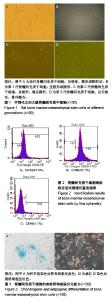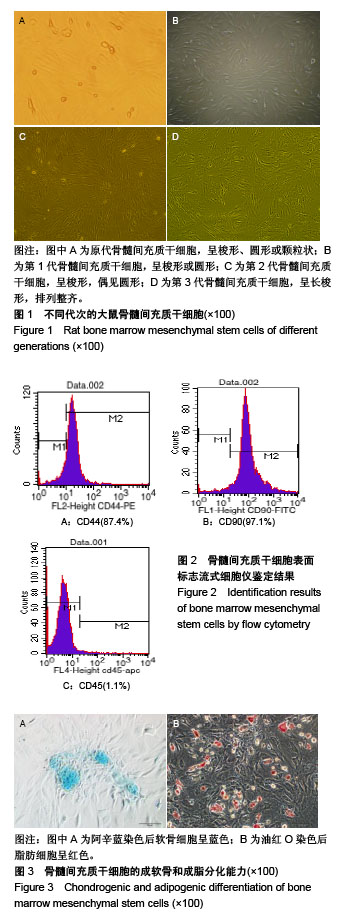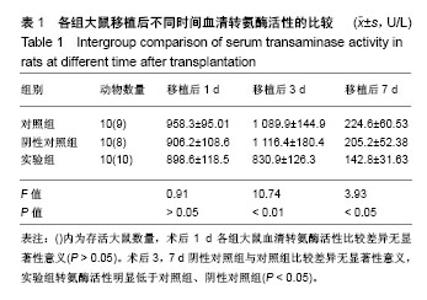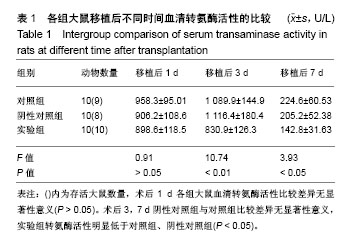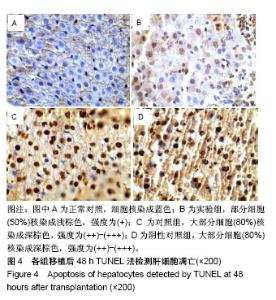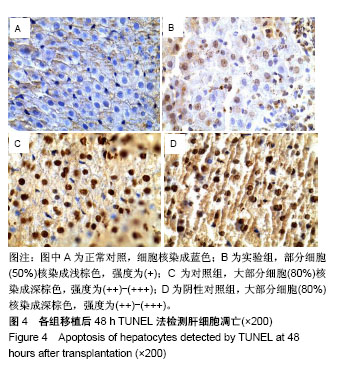| [1] 郑章强,朱志军. 心脏死亡供体器官捐献在肝移植中的应用及研究进展[J]. 实用器官移植电子杂志,2014, 2(4):212-216.[2] 何飞,谭颖徽,张纲. 人牙髓干细胞的体外培养和鉴定[J]. 华西口腔医学杂志, 2005, 23(1): 75-78.[3] W?odarski K, W?odarski P. Regulation of the differentiation of bone marrow mesenchymal stem cells into osteoblastic and adipogenic lineage. Chir Narzadow Ruchu Ortop Pol. 2011; 76(2):96-98.[4] Alberti E, Los M, García R, et al. Prolonged survival and expression of neural markers by bone marrow-derived stem cells transplanted into brain lesions. Med Sci Monit. 2009; 15(2):BR47-54.[5] 聂文波,汪明星,张振华,等.密度梯度离心法结合贴壁筛选法分离培养大鼠骨髓间充质干细胞的生物学特性[J].中国继续医学教育,2015,21(7):69-70.[6] Kamada N, Calne RY. Orthotopic liver transplantation in the rat. Technique using cuff for portal vein anastomosis and biliary drainage. Transplantation. 1979;28(1):47-50.[7] Hashimoto K, Eghtesad B, Gunasekaran G, et al. Use of tissue plasminogen activator in liver transplantation from donation after cardiac death donors. Am J Transplant. 2010; 10(12):2665-2672.[8] 林金芳,吴卫真. 间充质干细胞应用于器官移植的研究进展[J].国际外科学杂志, 2014, 41(5): 342-344.[9] Pan GZ, Yang Y, Zhang, et al. Bone marrow mesenchymal stem cells ameliorate hepatic ischemia/reperfusion injuries via inactivation of the MEK/ERK signaling pathway in rats. J Surg Res. 2012;178(2):935-948.[10] 杨湄,李青峰. 骨髓间充质干细胞在缺血性损伤治疗中的研究与进展[J]. 中国美容医学, 2009,18(11):1709-1711.[11] Kanazawa H, Fujimoto Y, Teratani T, et al. Bone marrow-derived mesenchymal stem cells ameliorate hepatic ischemia reperfusion injury in a rat model. PLoS One. 2011; 6(4):e19195.[12] Lai RC, Yeo RW, Tan KH, et al. Mesenchymal stem cell exosome ameliorates reperfusion injury through proteomic complementation. Regen Med. 2013;8(2):197-209.[13] Christophe M, Nicolas S. Mitochondria: a target for neuroprotective interventions in cerebral ischemia-reperfusion. Curr Pharm Des. 2006;12(6):739-757.[14] Lam SP, Luk JM, Man K, et al. Activation of interleukin-6-induced glycoprotein 130/signal transducer and activator of transcription 3 pathway in mesenchymal stem cells enhances hepatic differentiation, proliferation, and liver regeneration. Liver Transpl. 2010;16(10):1195-1206.[15] Hoogduijn MJ, Popp FC, Grohnert A, et al. Advancement of mesenchymal stem cell therapy in solid organ transplantation (MISOT). Transplantation. 2010;90(2):124-126.[16] 靳小建. 血清透明质酸, 肝细胞凋亡与肝储备功能的关系[D]. 南宁:广西医科大学, 2004. |
